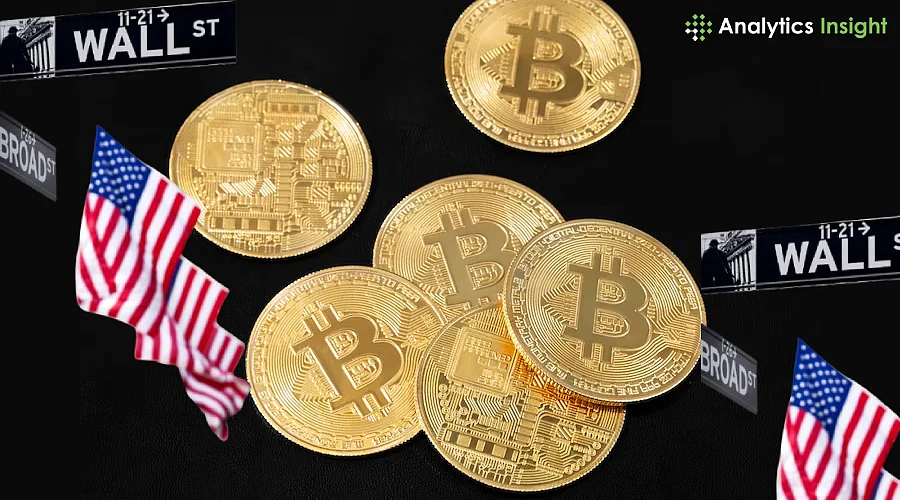
Wall Street Ditches Gold for Bitcoin: $9 Billion Pivot Says it All
Bitcoin ETFs See $9 Billion Inflows as Gold ETFs Bleed, Institutional Investors Betting Big!
Key Takeaways
Bitcoin ETFs saw $9 billion in inflows over five weeks, while gold ETFs lost $2.8 billion, indicating a strategic shift in safe-haven investing.
BTC hit a new all-time high of around $112K, fueled by regulatory optimism and macroeconomic uncertainty.
Institutional sentiment sees Bitcoin evolving into a standalone asset class, with less correlation to tech stocks and traditional markets.
In a dramatic shift within the US financial landscape, institutional investors are increasingly trading gold for Bitcoin. Over the past five weeks, US-listed Bitcoin exchange-traded funds (ETFs) have amassed more than $9 billion in net inflows, while gold-backed ETFs have hemorrhaged over $2.8 billion, according to data from Bloomberg. This capital migration signals more than just a trend; it reflects a deepening trust in Bitcoin as a modern hedge and a reshaping of safe-haven strategies across Wall Street.
Bitcoin ETFs Surge, Gold ETFs Decline
The charge is being led by BlackRock’s iShares Bitcoin Trust (IBIT), which has pulled in over $6.2 billion in May alone. This surge not only marks a record for IBIT since its launch but also highlights the growing demand for digital assets among major institutional investors.
Meanwhile, traditional gold ETFs, such as SPDR Gold Shares (GLD), have experienced persistent outflows, indicating a shift in investor sentiment. While gold remains a historically strong performer, up 25% year-to-date, money is flowing toward Bitcoin, which has gained 15% during the same period.
Bitcoin Hits New All-Time High Around $112K
Bitcoin’s momentum has been amplified by a favorable macroeconomic environment and recent policy developments. Earlier this month, Bitcoin reached a new all-time high of $111,980, buoyed by anticipation of regulatory clarity for stablecoins and increasing concerns over US fiscal policy.
With ballooning government deficits, concerns about inflation, and Moody’s having downgraded the US's last AAA rating, investors are seeking alternative stores of value. Bitcoin, long viewed as speculative, is now assuming a more mature role, comparable to gold, as a hedge against both government instability and systemic financial risks.
Bitcoin: A New Kind of Safe Haven
According to Geoff Kendrick of Standard Chartered, Bitcoin now acts as a hedge on two distinct fronts: private-sector instability and public-sector risk. He adds that Bitcoin’s correlation with traditional assets, such as the Nasdaq, the US dollar, and even gold, has weakened, a sign that it is maturing into a standalone asset class.
This decoupling is a critical milestone. It means Bitcoin is behaving less like a tech-driven, risk-on asset and more like a modern hedge, similar to how gold has functioned for decades.
Dilin Wu of Pepperstone echoed this sentiment, noting that Bitcoin is now being viewed as a macro asset in its own right, capable of absorbing capital flows typically reserved for gold and bonds.
Also Read: Bitcoin Beats Gold in Price, But Can It Hold as US Fiscal Instability Grows?
Why Is Gold Losing Steam?
Gold’s performance remains robust in 2025, but the outflows from gold ETFs suggest that investors are rebalancing rather than retreating. Jefferies strategist Christopher Wood summed up the market’s evolving view: “I remain bullish on both Gold and Bitcoin. They remain the best hedges on currency debasement in the G7 world.”
This perspective highlights the notion that gold isn’t being abandoned; rather, it’s sharing space with Bitcoin in portfolios seeking diversification and protection from fiat currency volatility.
However, Bitcoin’s digital native characteristics, combined with 24/7 liquidity and rapid institutional integration, give it unique advantages in the modern financial ecosystem.
What This Means for Investors
This shift marks a paradigm change. Bitcoin is no longer the fringe experiment it once was. With growing regulatory clarity, deepening ETF integration, and consistent inflows from major players, it's carving out a legitimate position beside traditional safe-haven assets.
If this trend continues, Bitcoin could become a permanent fixture in diversified portfolios not as a risk asset, but as a cornerstone of long-term financial strategy.
Also Read: Bitcoin to Overtake Cash and Gold? Michael Saylor's Ambitious $13M Prediction
